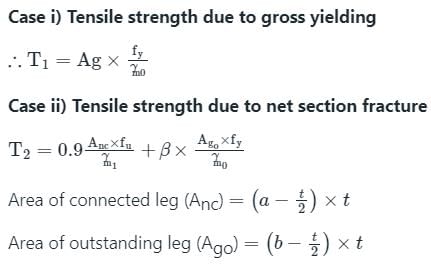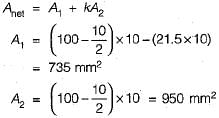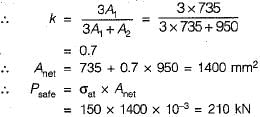Test: Tension Members - 1 - Civil Engineering (CE) MCQ
10 Questions MCQ Test GATE Civil Engineering (CE) 2026 Mock Test Series - Test: Tension Members - 1
Consider the following statements regarding tensile test diagrams for carbon steels with varying carbon contents:
As the carbon content increases
1. the ultimate strength of steel decreases
2. the elongation before fracture increases
3. the ductility of the metal decreases
4. the ultimate strength increases
Which of these statements are correct?
As the carbon content increases
1. the ultimate strength of steel decreases
2. the elongation before fracture increases
3. the ductility of the metal decreases
4. the ultimate strength increases
The effective flange area in tension of a plate girder is equal to
where Af is the area of each flange and Aw is the web area.
The order of elongation which a specimen of mild steel undergoes before fracture is
A plate used for connecting two or more structural members intersecting each other is termed as
Which one of the following stresses is independent of yield stress as a permissible stress for steel members?
An equal angle of area A has been attached to the support by means of a lug angle. If allowable stress in tension is f, what is the load carrying capacity of the member?
A tie member consists of ISA 100 × 75 × 8 longer leg is connected to a gusset plate. The gross cross sectional area of connected and unconnected leg are _______ mm2 respectively.
Steel of yield strength 400 MPa has been used in a structure. What is the value of the maximum allowable tensile strength?
A steel plate is 300 mm wide and 10 mm thick. A rivet of nominal diameter 18 mm is driven. The net sectional area of the plate is
The capacity of a single ISA 100 x 100 x 10 mm as tension member connected by one leg only using 6 rivets of 20 mm diameter is
The allowable stress is 150 N/mm2
|
31 docs|280 tests
|



























